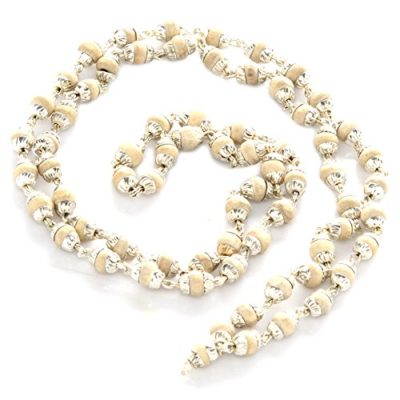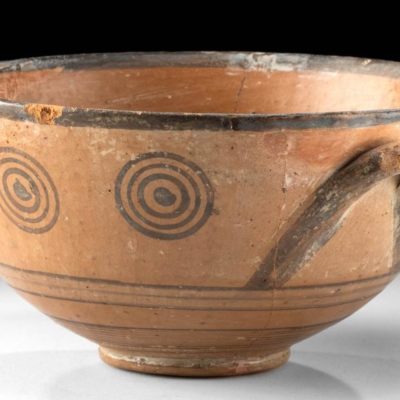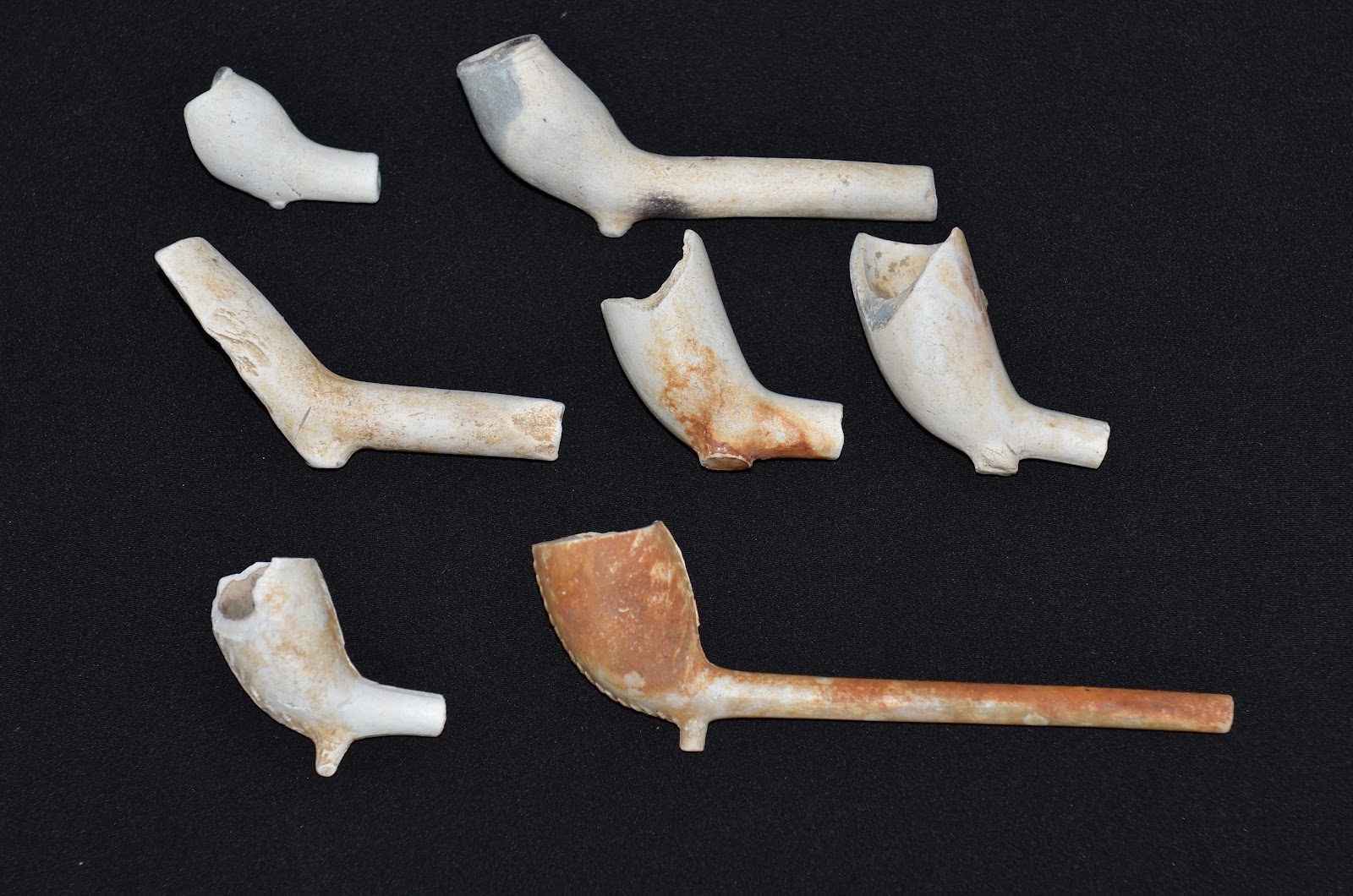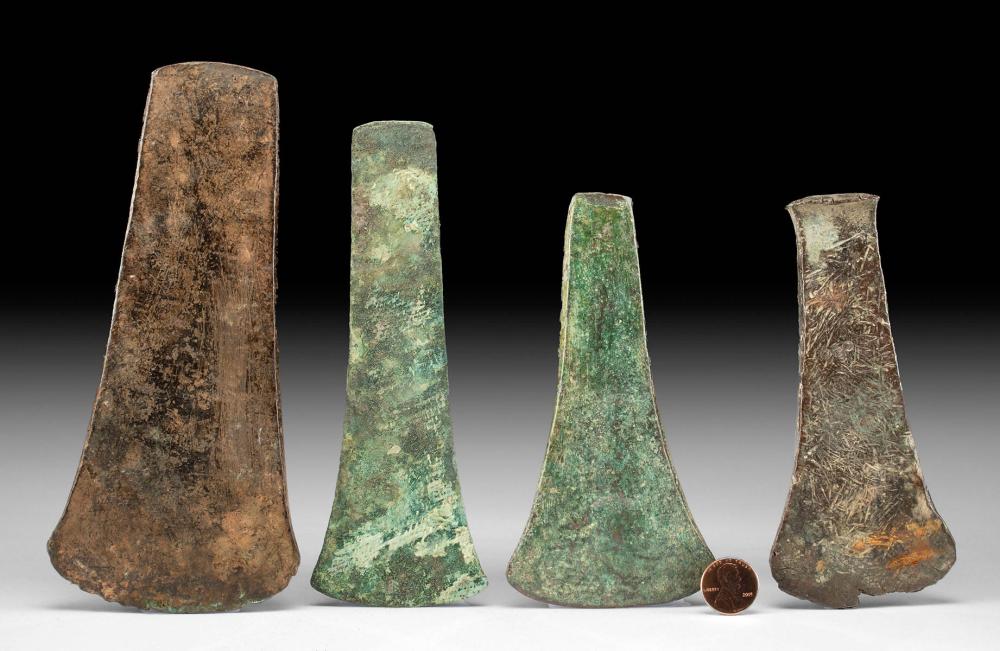After the great Peruvian Wari Empire was broken up around AD 900 several distinct cultural entities appeared in what is now called the Late Intermediate Period. In the coastal region south of Lima, the Ichma people settled and north of that region a group began a cultural tradition that today is called Chancay (pronounced CHAN –kigh). The Chancay people reigned in the Peruvian valleys of Chancay, Chillon and Huaura beginning around AD 1000 until conquered in the southern part of their realm by the Chimu in the early part of the 15th century and then completely annihilated by the Incas in AD 1450. But during their few hundred years of existence, they produced some very unique textiles and pottery including this rare and beautiful Chancay canteen.

The Chancay were somewhat unique for the place and time since they neither built nor left any distinguishable architectural features. They apparently had no political integration or major organized state governments that would have been used to construct great buildings or pyramids as many of the other regional cultures did. Instead they were seemingly independent farmers who raised their camelids and various crops and crafts persons who wove their textiles and made their pottery. These were in turn sold or traded to other regional people for the necessary goods and services that the Chancay citizens would have wanted and needed.
The textiles that were woven by these people were made from the wool of the llamas and alpacas that they domesticated and these weavings were apparently revered throughout the Peruvian region for their high quality. They were mostly in embroidery and paint decorated fabrics in red, blue, yellow, green, brown and white and in varied geometric designs. The quality of the spun woolen yarn and the tight weaving was so good that thousands of Chancay textile items have survived even into today, hundreds of years after they were made.
The ceramic products made by the Chancay are different from most other contemporaneous cultures in South America in the aspect that they are almost all white with black geometric designs on a matt and rough surface. Like the textiles, these people must have made and traded many thousands of ceramics items, especially the odd little fat human doll-like figures, since many have survived the lengthy time period since they were made. Some people call this pottery Chancay-Inca style but it really has nothing to do with the Inca culture since they literally crushed the Chancay people when they invaded their territory in AD 1450. Among the more rare styles of Chancay ceramics are the round and flattened bottles that, we today, would call canteens, such as the one pictured here. Whether it was used as we use the canteen today, to carry water, we will probably never know for sure but logic would seem to state that was its purpose.
This one is 7 ½ inches tall by 7 1/8 inches wide by 3 ¼ inches thick and it is typical Chancay in that it is rough texture white pottery over-painted with black – the body in diamonds and X’s and the flared neck in triangles and X’s around narrow stripes of black. Both edges are covered with a band of the black pigment about an inch in width and there is another band of the black paint about an inch and a half wide encircling the lower half of the canteen with the very bottom left in the original pottery white. There are two small carrying loops attached to each side of the canteen for the supposed purpose of tying a cord or vine so the vessel could have been slung around person’s neck to easily transport the water conveyance. Overall this is a very striking and quality paint pattern from this regional culture of maybe 600 to 1000 years in age. Any easily broken pottery vessel that has survived this long and has remained intact is remarkable to have prevailed as such. And when that vessel is as peerless and beautiful as a water receptacle that had belonged to an ancient Peruvian native, it becomes more than just remarkable – it becomes a Chancay Canteen.
REFERENCES:
Cuff, Yvonne H. 1996
CERAMIC TECHNOLIGIES FOR POTTERS AND SCULPTORS
Harday, Jorge E. 1964
PRE-COLUMBIAN CITIES
Longhena, Maria & Walter Alva 1999
THE INCAS AND OTHER ANCIENT ANDEAN CIVILIZATIONS
Moseley, Michael E. 2001
THE INCAS AND THEIR ANCESTORS
Steward, Julian H, Editor 1946
THE ANDEAN CIVILIZATIONS





